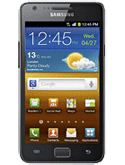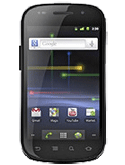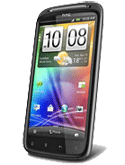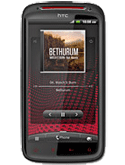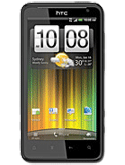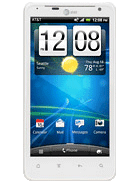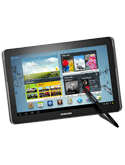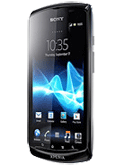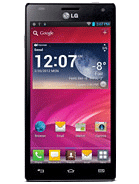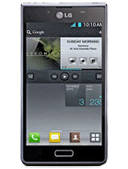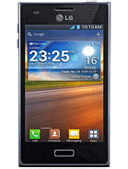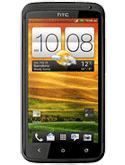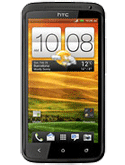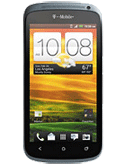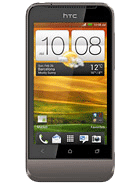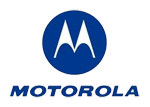Each version of Android has been named by Google after a dessert item; and this is done alphabetically. There was once a Cupcake, Donut, Éclair, Froyo, and Gingerbread for phones and Honeycomb for tablets. Now, the next letter enters the limelight.
Android phones are still dominating the public interest this 2012. With the all new android technology, smartphone users cannot take the urge but to grab one. The Android developer community introduced the latest version of the Android platform last year during the unveiling Galaxy Nexus phone. This is the Android 4.0 Ice Cream Sandwich (ICS). This newest version boasts its power in terms of communication and sharing. It provides everything people love most about Android and take them to a higher level. What makes this even more fascinating is its nature of having the blend of parts of Gingerbread and parts of Honeycomb into a single version thus providing the ability to be optimized on both smartphones and tablets.
Thinking of the words “Ice Cream” and “Sandwich” makes us imagine some sort of a tasty treat. There is a growing list of Android version 4.0 phones that are available this 2012 and will make you realize that Ice Cream Sandwich is not just an ordinary treat but a treat beyond words. The lists below include phones that have Android 4.0 as their native OS or have already received upgrades, list of upcoming Android 4.0 phones, and those phones that will get upgrade any time soon (as confirmed by their respective manufacturer).
• Preloaded and Upgraded Android 4.0 Phones
• 4.65" Touchscreen
• (135.5)x(67.9)x(8.9) mm
• 1.2GHz Dual-Core CPU
• 1GB RAM
• 16GB Storage
• 5MP Camera, 1.3MP Secondary
The Samsung Galaxy Nexus a.k.a Google Nexus is a collaborative product of Samsung and Google. It is one of the most anticipated phones in 2011 as it is the first smartphone to come with Android 4.0 Ice Cream Sandwich OS
• Android 2.3
• Android 4.0 upgrades started on March 2012
• 4.3" Touchscreen
• (125.3)x(66.1)x(8.5) mm
• 1.2GHz Dual-Core CPU
• 1GB RAM
• 16GB or 32GB Storage
• 8MP Camera, 2MP Secondary
The Samsung Galaxy S II is a slim smartphone that boasts high resolution cameras and video and offers great multimedia experience.
• Android 2.3
• Android 4.0 upgrades started on March 2012
• 4.0" Touchscreen
• (123.9)x(63)x(10.9) mm
• 1GHz CPU
• 512MB RAM
• 16GB Storage
• 4MP Camera, VGA Secondary
The Samsung Nexus S or Google Nexus S is the first Android 2.3 Gingerbread smartphone and first android phone to support NFC. It is the predecessor of the Galaxy Nexus phone.
• Android 2.3
• Upgraded to Android 4.0 in March 2012
• 4.3" Touchscreen
• (126.1)x(65.4)x(11.3) mm
• 1.2GHz Dual-Core CPU
• 768MB RAM
• 1GB Storage
• 8MP Camera, VGA Secondary
The HTC Sensation is an Android 2.3 phone released on April 2011 for T-mobile in the US where is received 4G LTE support, and Vodafone in the European Market
• Android 2.3
• Android 4.0 upgrade started in March 2012
• 4.3" Touchscreen
• (126.1)x(65.4)x(11.3) mm
• 1.5GHz Dual-Core CPU
• 768MB RAM
• 4GB Storage
• 8MP Camera, VGA Secondary
The HTC Sensation XE is a special edition of the HTC Sensation. It features Beats Audio and received hardware improvements in terms of processor speed and built-in storage capacity.
• Android 2.3
• Received Android 4.0 upgrade on March 2012
• 4.5" Touchscreen
• (128.8)x(67)x(11.3) mm
• 1.5GHz Dual-Core CPU
• 1GB RAM
• 16GB Storage
• 8MP Camera, 1.3MP Secondary
• 4G LTE
The HTC Velocity 4G, as the name implies, is a 4G enabled
dual-core smartphone. It was announced early January 2012 and officially made available on the same month. It was introduced as an Android 2.3 phone but later received an Android 4.0 upgrade.
• Android 2.3
• Received Android 4.0 upgrade on March 2012
• 4.5" Touchscreen
• (128.8)x(67)x(11.3) mm
• 1.5GHz Dual-Core CPU
• 1GB RAM
• 16GB Storage
• 8MP Camera, 1.3MP Secondary
• 4G LTE
It joined the group of HTC Velocity 4G as another 4G phone from HTC to recieve an Android 4.0 Ice Cream Sandwich upgrade. The vivid was released on November 2011 with Android 2.3 as its OS.
• Upcoming Android 4.0 Phones
• 4.65" Touchscreen
• (256.7) x (175.3) x (8.9) mm
• 1.4GHz Dual-Core CPU
• 1GB RAM
• 16GB/32GB/64GB Storage
• 3.15MP Camera, 2.0MP Secondary
The Galaxy Note 10.1 will be the
next installment of the Galaxy Note Phone series after the Galaxy Note 1717. This time it will be a full tablet in form but still have the functionalities of a phone. It may not be a good choice though for those looking for a good quality cameras.
• 4.3" Touchscreen
• (121) x (61.1) x (12.2) mm
• 1GHz CPU
• 1GB RAM
• 16GB or 32GB Storage
• 5MP Camera, VGA Secondary
The Sony Xperia Neo L was announced on March 2012 and is expected to be released on the same month, but only for Chinese market. Another drawback is its CPU that clocks only at 1GHz and is a single-core and RAM at 512MB only.
• 4.7" Touchscreen
• 1.5GHz Quad-Core CPU
• 1GB RAM
• 16GB Storage
• 8MP Camera, 1.3MP Secondary
The LG Optimus 4X HD is one of the most anticipated Android 4.0 ICS phone. It will certainly impress users with its quad-core speed computing. It is quite a large-screen phone with a 4.7 inches display. It is expected to be officially released in the 2nd quarter of 2012.
• 4.3" Touchscreen
• (125.5) x (67) x (8.8)mm
• 1GHz Dual-Core CPU
• 512MB RAM
• 4GB Storage
• 5MP Camera, Secondary present
The LG Optimus L7 was annouced on February 2012 and is expected to be released on May. It is expected to be a budget Ice Cream Sandwich phone.
• 4.0" Touchscreen
• 800MHz CPU
• 5MP Camera, Secondary present
The LG Optimus L5 might be even a more "budget" Android 4.0 phone than the Optimus L7 due to its lower hardware specs. The CPU is a single-core at 800MHz, RAM is not specified, and has a screen resolution of only 320x480 pixels.
• 4.7" Touchscreen
• (134.4) x (69.9) x (8.9) mm
• 1.5GHz Quad-Core CPU
• 1GB RAM
• 32GB Storage
• 8MP Camera, 1.3MP Secondary
The HTC One X can compete against the LG Optimus 4X HD in the battle for Android 4.0 quad-core beasts. Not only they packed the same 1.5GHZ quad-core Tegra 3 processor, they have same screen size at 4.7", same resolution at 720 x 1280 pixels, same thickness at 8.9 mm, and the same cameras: 8MP primary and 1.3MP secondary.
• 4.7" Touchscreen
• (134.4) x (69.9) x (8.9) mm
• 1.5GHz Dual-Core CPU
• 1GB RAM
• 16GB Storage
• 8MP Camera, 1.3MP Secondary
The HTC One XL almost resembles the HTC One X, but is a downgraded version of the former in terms of CPU specs. It has 1.5GHz dual core processor.
• 4.3" Touchscreen
• (130.9) x (65) x (7.8)mm
• 1.5GHz Dual-Core CPU
• 1GB RAM
• 16GB Storage
• 8MP Camera, VGA Secondary
This is another member of the HTC One family of smartphones and also has lower specs compared to the flagship HTC One X (CPU speed and cores, screen resolution). It also has smaller screen but ultra thin at 7.8 mm.
• 3.7" Touchscreen
• (120.3) x (59.7) x (9.2)mm
• 1GHz CPU
• 512MB RAM
• 4GB Storage
• 8MP Camera
The HTC One V might be the most inferior (specs-wise) among the members of the HTC One family - definitely the budget option. It has a single core processor at 1GHz; Smallest screen size; Lowest screen resolution at 480 x 800 pixels; Has the least RAM at 512MB; No secondary camera.
• Phones Confirmed to Receive Android 4.0 Upgrade
- Samsung Captivate Glide
- Samsung Galaxy Note
- Samsung Galaxy R
- Samsung Galaxy S II Skyrocket
- HTC's Amaze 4G
- HTC Desire HD
- HTC Desire S
- HTC Droid Incredible 2
- HTC EVO 3D
- HTC EVO Design 4G
- HTC Incredible S
- HTC Raider
- HTC Rezound
- HTC Rhyme
- HTC Sensation 4G
- HTC Sensation XL
- HTC Thunderbolt
- LG Eclipse
- LG MyTouch Q
- LG Nitro
- LG Optimus 2X
- LG Optimus 3D
- LG Optimus Big
- LG Optimus Black
- LG Optimus EX
- LG Optimus LTE
- LG Optimus Q2
- LG Optimus Sol
- LG Prada
- LG Spectrum
- Motorola Atrix 2
- Motorola Atrix 4G
- Motorola Droid 4
- Motorola Droid Bionic
- Motorola Droid Razr
- Motorola Droid Razr Maxx
- Motorola MT917
- Motorola Photon 4G
- Motorola Razr
- Sony Ericsson Live
- Sony Xperia Active
- Sony Xperia Arc
- Sony Xperia Arc S
- Sony Xperia Ion
- Sony Xperia Neo
- Sony Xperia Neo V
- Sony Xperia Mini
- Sony Xperia Mini
- Sony Xperia P
- Sony Xperia Play
- Sony Xperia Pro
- Sony Xperia Ray
- Sony Xperia S
You can download the summary of the Android 4.0 Phones List
here
(Note: The list includes phones from mainstream manufacturers selected by the editor. There are definitely other Ice Cream Sandwich phones from brands not mentioned above)
“Simple yet functional”—this phrase best describes Android 4.0 (Ice Cream Sandwich) phones. The remarkable features of Ice Cream Sandwich phones as compared to earlier versions include: more visible actions and easier navigation on the capacitive touch screen, resizable widgets, new lock screen actions—face unlock, swift responses for any alerts, improved text input and spelling checker, powerful voice input engine, controlled network data, refined accessibility, unified calendar, visual voicemail, rich and versatile camera, redesigned gallery and photo editor, video with live effects, screenshot sharing, convenient web browsing, improved email, Wi-Fi direct and Bluetooth HDP and Android Beam for NFC-based sharing. With these spectacular features, Android 4.0 would definitely top the market.
Setting the Android capacities aside, another feature that needs to be well commended is the physicality. Since it is a new operating system, it is best to have its new “look” in the phone industry. Google is leading a completely new Android identity. Bid goodbye to the hardware buttons because everything is touch-screen-controlled. There goes the improved font for better reading called the “Roboto”—making the text sharper, crisper and even clearer. There is also the “magazine-style” grid of thumbnails that appears in different slides. Every screen slide is manageable and adjustable making it look like a 3D hologram.
Android never fails our expectations whenever internet gaming and surfing is concerned. With the new Android 4.0, new-fangled browsing and email capabilities are added to let users feel the communication and keep it solidly organized. Android phones are continuously lashing their way forward and drawing new lines of boundaries thus improving our need for communication and sharing.

